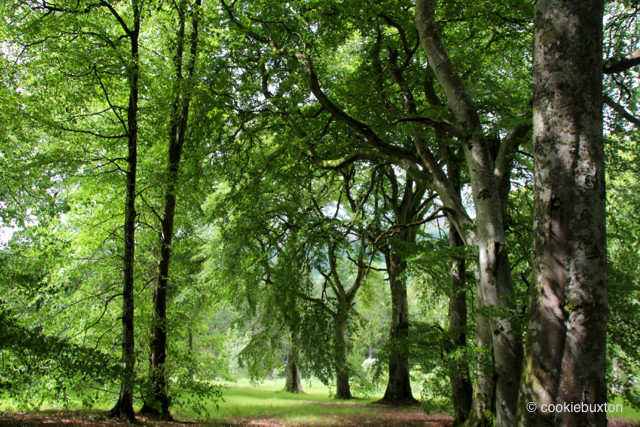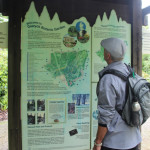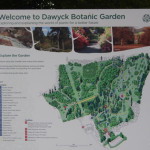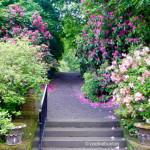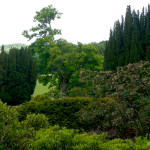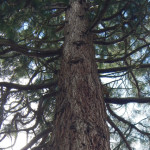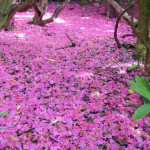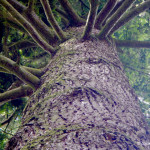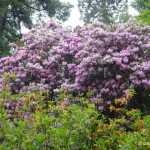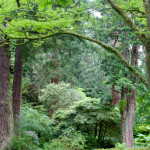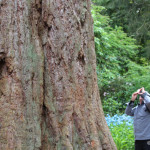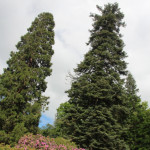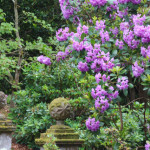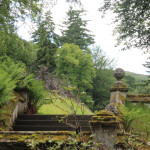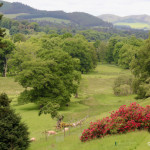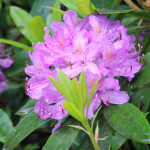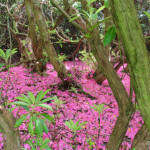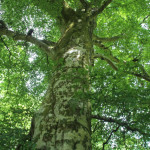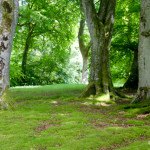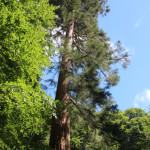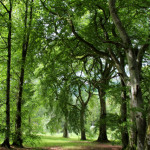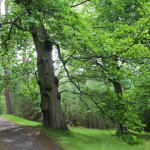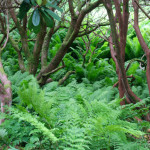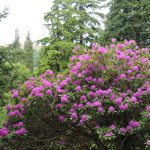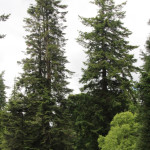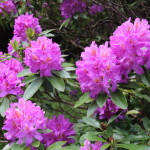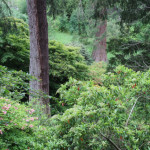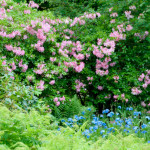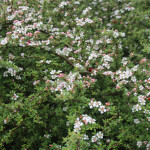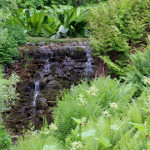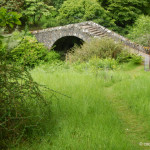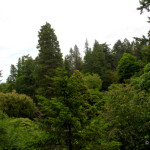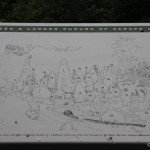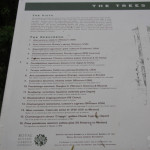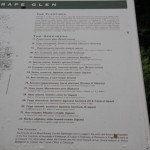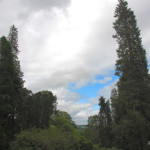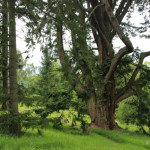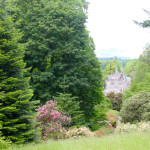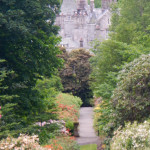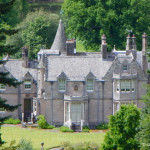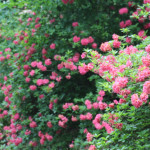Dawyck Garden, Scotland
Wonderful Dawyck Botanic Garden and Arboretum – how fortunate we were to walk along its pathways crisscrossing 26 hectares (65 acres) in the Scottish Borderlands, in Stoho, south of Edinburgh.
And how fortunate we all are that the former estate owners – the Veitch family in the 17th century; then the Sir John Murray Naesmyth (Naesmith) family (from 1691); the F.R.S. Balfour clan (from 1897); and, lastly, the staff of the Royal Botanic Garden Edinburgh (Dawyck is one of the four RBGE gardens) managing the property since 1978 – collectively had the interest, the vision, and the financial wherewithal and expertise to build this outstanding collection of plants, shrubs, and trees from around the world.
Before I share a few details about the collection, I will tell you about our serendipitous timing.
My husband Art and arrived at Dawyck just as it started raining heavily, so much so that we couldn’t begin our tour right away. Instead, we tucked ourselves into the lovely Dawyck Café at the foot of the garden where we enjoyed cake and tea, much welcomed after our drive south from Edinburgh. Only three days on the road since we landed in Scotland, and having to concentrate fiercely when driving on the left side of the road rather than on the right as in Canada, as the “designated driver” for our trip I found myself looking forward to standing on terra firma at regular intervals. We took our time, while the rain continued to fall, and browsed through the books and gift items in the shop, and dallied in the visitor centre to get our bearings and learn more about Dawyck.
While resting in the Dawyck Café, we noticed a staff member running out into the garden with an umbrella to help folks who were stalled in their journey by the heavy rain, standing under some large trees, and one of them needing to sit down. We immediately got the sense, by this action and reinforced by countless other indicators, that this was a place where people cared – about their guests, their heritage, and about stewarding the significant plant collections all around them. We felt welcomed, and, remarkably, we felt a bit like we were at home due to similarities in our climate zones, and because some of the trees in the Dawyck collection, like the handsome Douglas firs, grow in North American mountain forests and woodlands and were already familiar to us.
And then, with perfect timing, the rain let up. The clouds stretched out enough to let in some sunshine.
Strolling through the beautiful grounds of Dawyck Garden
Surveying the garden map before heading out, we selected a clockwise route, and stepped up the stone steps past the moss-covered garden posts to enter into the beautiful grounds of Dawyck.
We began our stroll through the grounds with droplets of water glistening on leaves, darkening the bark on the trees, and dripping from the flower petals. What a gorgeous sight it was to see the garden on this particular day. There are times when we stood, captivated, looking at freshly fallen petals of rhododendrons, carpeting the ground in the magical, dappled light of late afternoon.
There are thousands of types of trees at Dawyck, including Douglas fir, grand, and noble firs, Balsam fir, Lombardy poplar, Sierra redwood, larch, beech, horse chestnuts, and Scots pine. Three of Scotland’s 11 identified and protected Heritage Trees of Scotland in the Scottish Borders are here at Dawyck. The heritage collection includes the Dawyck Silver Fir (~35m high; girth 5.4m); the Dawyck Larch (planted 1725, ~33m high; girth 4.5m); and the Dawyck Beech, distinguished by its atypical form (planted 1860; it has upswept branches). The garden is also known for its Cryptogamic Sanctuary, described as the world’s first reserve for mosses, liverworts, lichens, and fungi.
I will let the photos speak for themselves of our afternoon at Dawyck – light and shade, gorgeous trees, rhododendrons and azaleas, beautiful surroundings in the Upper Tweed Valley, a place to visit again and again, to enjoy, and to learn. We took our time along the pathways, rested at the lovely Dutch Bridge, strolled the Beech Walk, and looked out at the Twinned Peaks of Douglas Fir. We stood for some time in the Scrape Glen, surveying the landscape and matching trees to the type using the etched drawings on the signage on site. Towards the end of our walk, before heading back along the spectacular Azalea Terrace, we spotted a pheasant moving through the tall grasses.
In the Cookie Buxton photograph gallery, below, you will catch a few glimpses of lovely Himalayan poppies (Meconopsis). I was tempted to buy a poppy seed packet in the Dawyck gift shop, but thought it would be an odd keepsake from my trip to a Scottish arboretum. What I did bring away, and will cherish, is the memory of these tall, delicate blue flowers dotting the Dawyck pathways where light made its way in and around Dawyck’s impressive and important collection of trees and shrubs and undergrowth.
In a few photographs, you can see the original Dawyck house, which remains in private use. From earlier spellings of “Dawic” and “Dauwic”, the word is possibly derived circa 1200 (thank you, Wikipedia contributors) from the combination of the Gaelic word for an “ox” and the Old English word “wic” for dwelling, or camp.
Dawyck Botanic Garden is located at Stobo, 45 kilometres (28 miles) south of Edinburgh via the B712, and roughly 13 kilometres (eight miles) southwest of Peeples, in the scenic Scottish Borders region of southern Scotland.
Visit www.rbge.org.uk/dawyck .
If you liked this article, you might also enjoy “My Post-British-Garden-Tour Blues.”
Copyright: Nadine Kampen / Cookie Buxton
Text /Images: NK / NK and ArtK
Photo Location and Date: Dawyck Botanic Garden and Arboretum, June 2016
Photograph Gallery
Click on any photography to enlarge; click again to advance the images.
